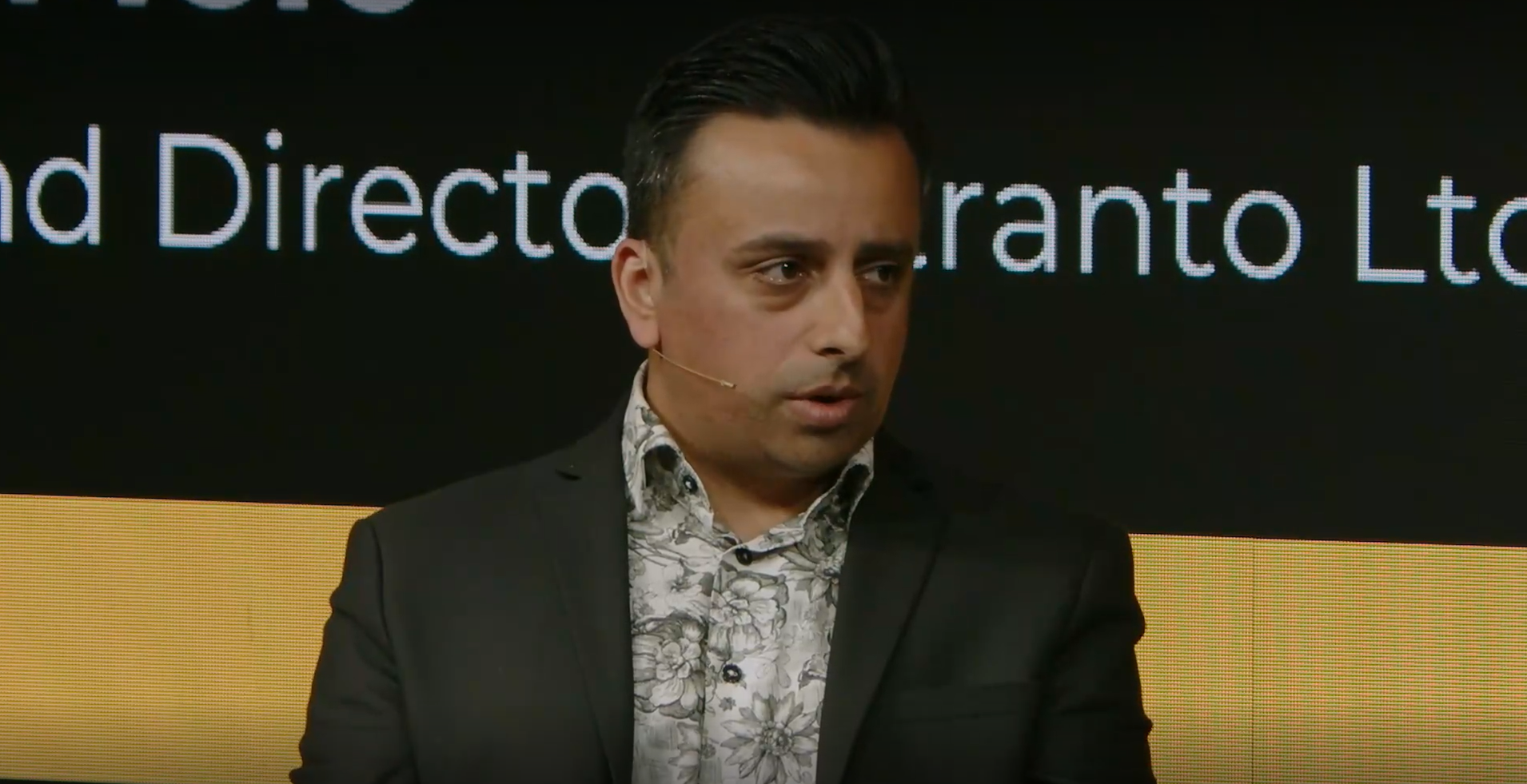
|
Getting your Trinity Audio player ready... |
CBDCs, stablecoins, tokenized assets, and the regulations surrounding them were a hot topic at the London Blockchain Conference 2024 (LBC 2024). On Day 2, Bitpowr Technologies Co-founder Amarachi Amaechi hosted a panel discussing the future of money.
Panelists included Kaj Burchardi, Managing Director of Boston Consulting Group; Vincent Mele, Founder and Director of Otranto; Blake O’Donnell, Partner at Punter Southall Law; and Simit Naik, Director of Strategy at nChain.
The future of money looks radically different
Even though we’re in the early stages of the ‘utility era’ for blockchain technology and digital ledgers, we’ve already seen some amazing innovations. The conversation kicks off with a discussion on CBDCs, stablecoins, and the various use cases for digital ledgers and blockchain tech.
Burchardi echoes a sentiment we’ve heard time and time again in the CBDC discussion: digital currencies must be designed carefully with user protection in mind. This sentiment was recently expressed by Bundesbank President Joachim Nagel in a recent address.
O’Donnell comments that central banks are concerned about CBDCs and other digital currencies disrupting the global financial system. They’re moving towards the implementation stage but are a while off that yet.

Naik says CBDCs, digital currencies like Bitcoin, and other forms of currency can coexist. This is often missed in the debate surrounding them.
Mele points out that central banks were more generally challenged by Bitcoin and digital currencies. This woke them up to their role and how they were in charge of overseeing money as a public good.
How do stablecoins fit, and what are the regulatory issues?
O’Donnell replies that stablecoins are a wake-up call to make a better form of national currencies or lose out to private ones. Policymakers are also concerned about how private stablecoins might be used, e.g., by Russia using Tether to evade sanctions.
Burchardi says they aren’t new; privately issued money has existed for a long time. He thinks the EU’s MiCA regulations do a good job of breaking up roles and responsibilities as well as outlining concerns.
Naik thinks regulations and risks depend on the type of coin. There are fiat-backed, asset-backed, crypto-backed, and algorithmic stablecoins, to name a few. Risk will always exist, and regulations are designed to mitigate those risks and protect the consumer.

Burchardi highlights how sending stablecoins around the world easily and at no real cost is revolutionary in many ways. In some places, they provide a better alternative to national currencies.
Naik follows up on this point by stating how stablecoins can make cross-border payments much more efficient. There’s power in moving money quickly and easily. They’re a solution to a long-standing problem.
Mele looks at things through the geopolitical lens: some countries don’t want any other nation to have control over the global financial system. This isn’t an anti-U.S. position, but they’re opposed to any one player having this power on principle.
Tokenization is unlocking new possibilities. How can it increase liquidity and accessibility for assets?
Naik says one problem with many of these assets is cost; real estate or diamonds are typically expensive. Tokenization and fractionalization can bring in liquidity, but regulated secondary markets are required to enable their buying and selling. However, some of these assets also require delivery, and that’s a second problem that hasn’t been solved yet.
O’Donnell refers to the issuance of shares as the original way to fractionalize ownership. Now, we can use tokens. He notes that BlackRock is looking to tokenize $10 trillion of assets. As things move forward, they’ll become increasingly sophisticated, he says.

Mele believes tokenization is an extension of securitization. Digital ledgers can be used to keep transparent records of everything, making the issuance, transfer, and storage of securities more efficient.
Burchardi notes that massive cost savings are possible. However, businesses can have other issues, such as redefining legal terms that undo these savings, at least initially.
The growing popularity of digital currencies and tokenization has led to the development of CBDCs. What are the key drivers, and how will they be developed?
Tackling CBDCs first, Naik says the drivers differ from bank to bank. CBDC is somewhat of a generic term, and the drivers, needs, and problems of each situation will determine the development path.
Burchardi points out that we have already seen a lot of innovation. There’s still a lot of testing to be done, but some CBDC projects are already in the pilot stage or have been launched. Full production is still a while away in many jurisdictions.

O’Donnell summarizes the Bank of England’s position: they want more options for the public, faster payments, the streaming of money and micropayments, and financial inclusion. They have also identified some risks, such as cyberattacks and the disintermediation of retail banks. Privacy concerns are also an ongoing issue with the public.
Mele thinks we must highlight the difference between CBDCs and other payment methods like Mastercard and Visa. Unless we successfully communicate the difference, adoption will take much longer.
What’s one key piece of advice you have for policymakers?
Amaechi brings the panel to a close by asking each of the guests for their best piece of advice for policymakers.
O’Donnell advises them to keep politics out of it. Money is supposed to be neutral, he says, and politicizing money will lead to a “lot of trouble.”
Mele agrees with O’Donnell, saying money is the most powerful tool in the world. By controlling money, wars can be won without firing a single shot. His advice is to keep it neutral, too.
Burchardi suggests thinking about the problem you’re trying to solve. This should be the guiding principle behind design and implementation.
Naik’s advice is to make it easy for users to adopt and use. It has to be easier than existing solutions, or people won’t bother.
Watch: CBDCs are more than just digital money

 11-21-2024
11-21-2024


